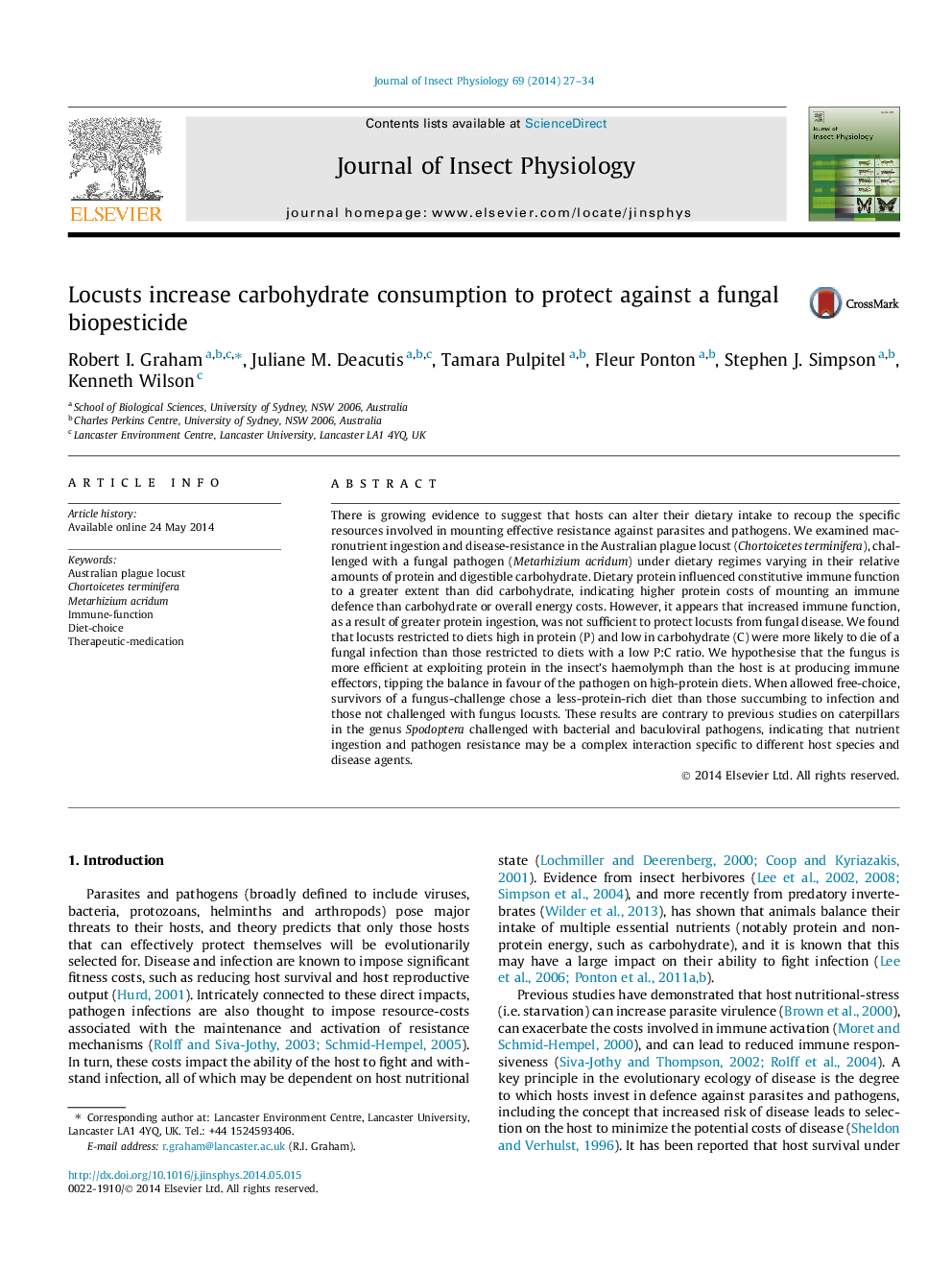| Article ID | Journal | Published Year | Pages | File Type |
|---|---|---|---|---|
| 5921608 | Journal of Insect Physiology | 2014 | 8 Pages |
â¢We examine macronutrient ingestion and fungal disease-resistance in locusts.â¢Dietary protein influences immune-function greater than carbohydrate.â¢However, those fed high protein/low carbohydrate were more likely to die of fungus.â¢When allowed free-choice, fungus-survivors chose less protein than those dying.
There is growing evidence to suggest that hosts can alter their dietary intake to recoup the specific resources involved in mounting effective resistance against parasites and pathogens. We examined macronutrient ingestion and disease-resistance in the Australian plague locust (Chortoicetes terminifera), challenged with a fungal pathogen (Metarhizium acridum) under dietary regimes varying in their relative amounts of protein and digestible carbohydrate. Dietary protein influenced constitutive immune function to a greater extent than did carbohydrate, indicating higher protein costs of mounting an immune defence than carbohydrate or overall energy costs. However, it appears that increased immune function, as a result of greater protein ingestion, was not sufficient to protect locusts from fungal disease. We found that locusts restricted to diets high in protein (P) and low in carbohydrate (C) were more likely to die of a fungal infection than those restricted to diets with a low P:C ratio. We hypothesise that the fungus is more efficient at exploiting protein in the insect's haemolymph than the host is at producing immune effectors, tipping the balance in favour of the pathogen on high-protein diets. When allowed free-choice, survivors of a fungus-challenge chose a less-protein-rich diet than those succumbing to infection and those not challenged with fungus locusts. These results are contrary to previous studies on caterpillars in the genus Spodoptera challenged with bacterial and baculoviral pathogens, indicating that nutrient ingestion and pathogen resistance may be a complex interaction specific to different host species and disease agents.
Graphical abstractDownload full-size image
